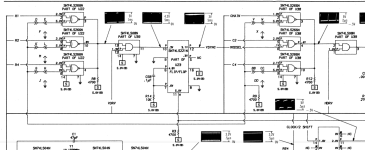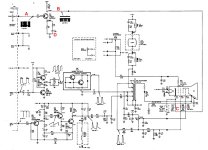The internal mail system bounced for some reason, With regard to C301 in the circuit fragment you attached:
If C301, a signal coupling capacitor, if it was defective, open or high ESR, it would just leave the 220k in circuit to pass signal , that in conjunction with the CRT's capacitance would create a low pass filter, causing the smear and loss of high frequency detail in the picture.
The circuit is drawn like it is a polarized electrolytic capacitor. If it was a film type it would highly unlikely have failed.
So I'm not certain that it has failed, or if it is actually an electro or film type, but it is worth checking. I would probably replace it with a film cap of the same uF and voltage rating, or a higher voltage rating if that was what I could get.
I'm still not certain which is the exact schematic for your set. But the basic plan would be to trace the video, with the scope , from its output from the computer, all the way through to the CRT cathode. It should be pretty easy to find where the high frequency response gets degraded.



















